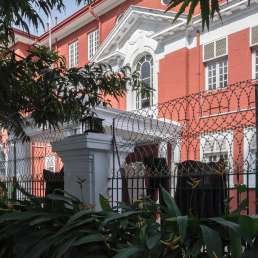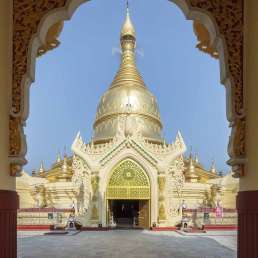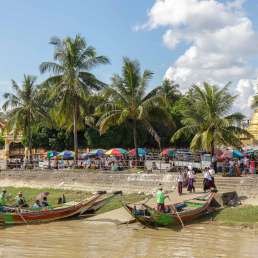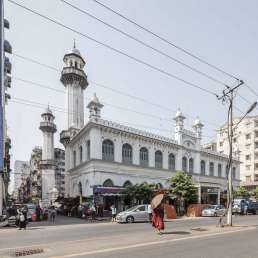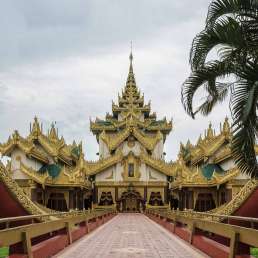Formerly: High Court
Address: 89-124 Pansodan Street
Year built: 1905-1911
Architect: James Ransome (architect), Bagchi & Co. (contractors)
The High Court is one of Yangon’s most iconic colonial buildings. Pictured overleaf with the Independence Monument, it is an inescapable sight as you stroll downtown (or rather, weave through the fumes and traffic).
Its architect, James Ransome (1865–1944), was John Begg’s predecessor as Consulting Architect to the Government of India. When John Begg took over the position, Ransome’s High Court was almost complete. Begg judged the construction “somewhat over-designed”. Certainly the building displays a generous dose of pomp. The impression is similar to the one conveyed by Jan Morris about the British colonial High Courts of India: she describes them as “very conscious of their own importance, and into them the architects tried to build the loftiest meanings of empire”.
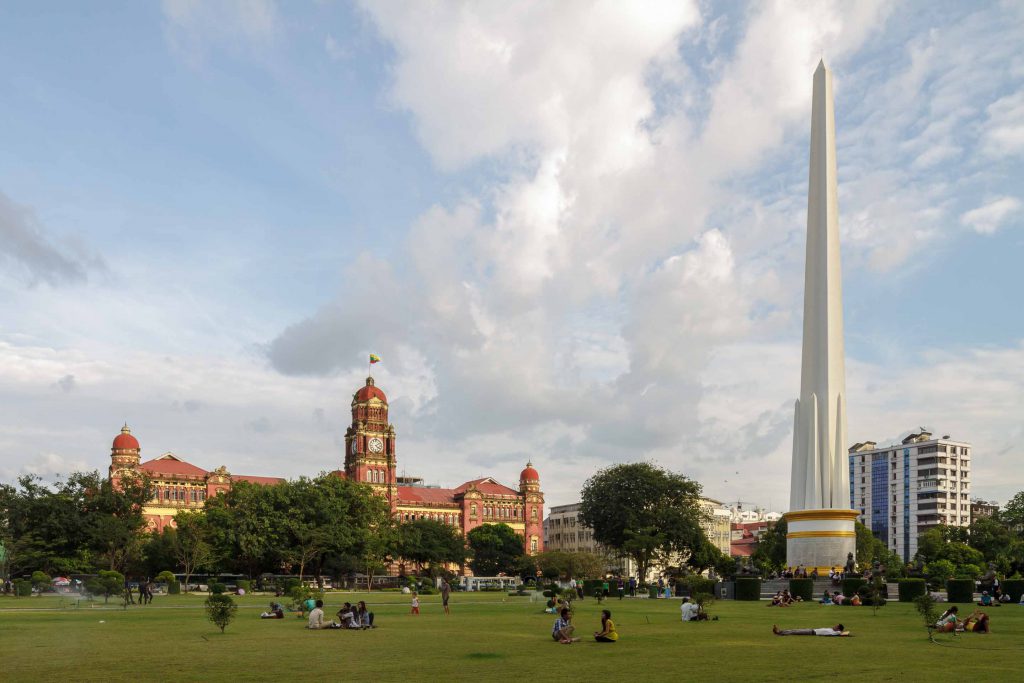
The towers and loggia windows feature elaborate brick patterns. The cream-painted arches, rows of balconies and stuccowork echo Renaissance architecture. (But this building is distinctive in its use of pale burgundy bricks, manufactured locally by the construction company Bagchi & Co.)
Ransome didn’t spare any bombastic detail or British imperial cliché. On the roof of each wing, a lion faces its opposite number. The tall portico leads into a vast inner courtyard. Loggias run along both the inside and outside of the building. The engineers spared no effort either. This was one of the first buildings in Yangon to have toilet and plumbing facilities as well as electricity.
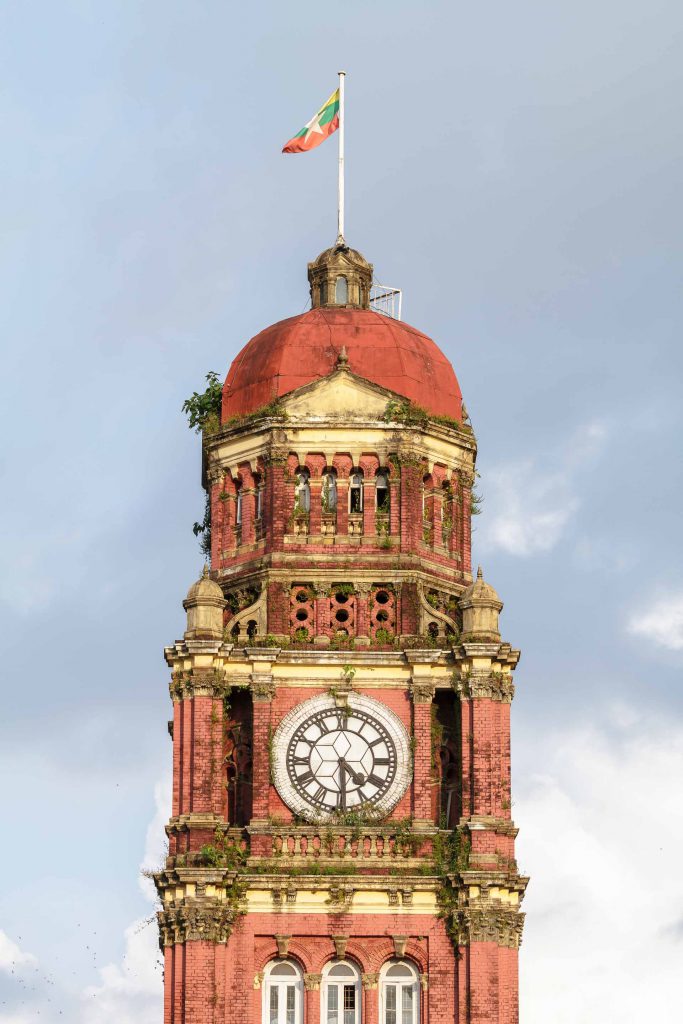
Like many other buildings throughout Rangoon, the construction had to accommodate swampy soils. Sarah Rooney explains: “The clock tower was a risky endeavour and required extensive foundations made of thitya, a hardwood that is especially durable in damp conditions.”
Prime Minister U Nu’s post-independence government maintained—and improved—the British legal system. But Ne Win’s coup in 1962 changed everything. The Chief Justice of the Supreme Court was one of several people who were immediately arrested when Ne Win’s units rolled into the city. His regime did away with the Supreme Court and replaced it with a socialist variant, the Council of People’s Justices. General Ne Win controlled the appointments.
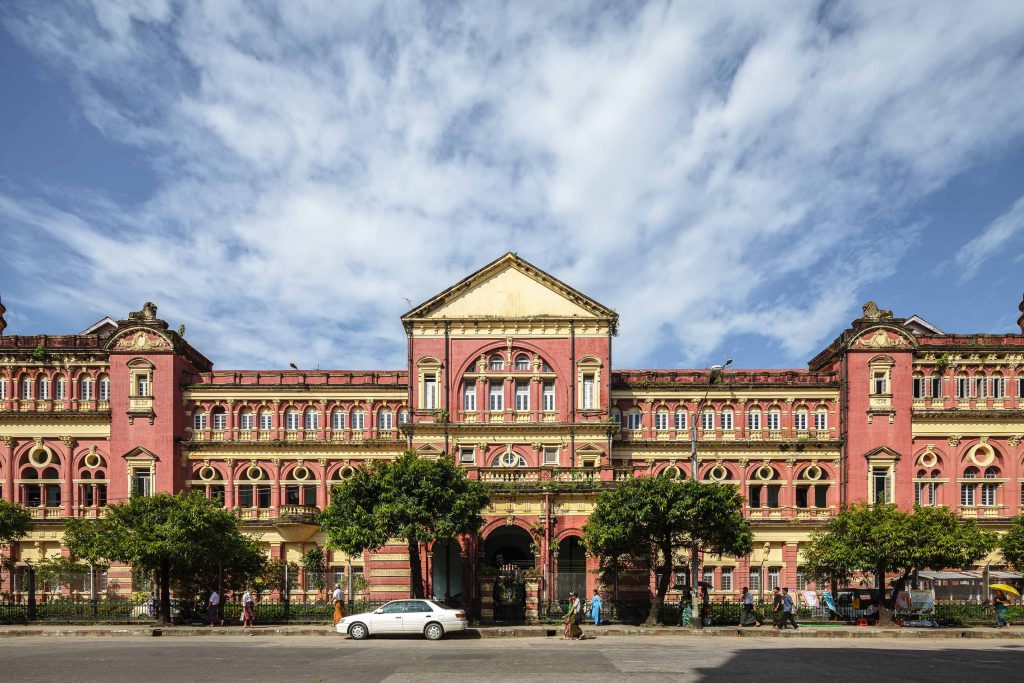
The 2008 Constitution states that judges should be appointed on merit. In practice, the president and the speakers of both chambers submit the names to parliament for a vote. Myanmar’s Supreme Court moved to the new capital, Naypyidaw, in 2005 and this grandiose building is now a local court. It is only partly occupied.
